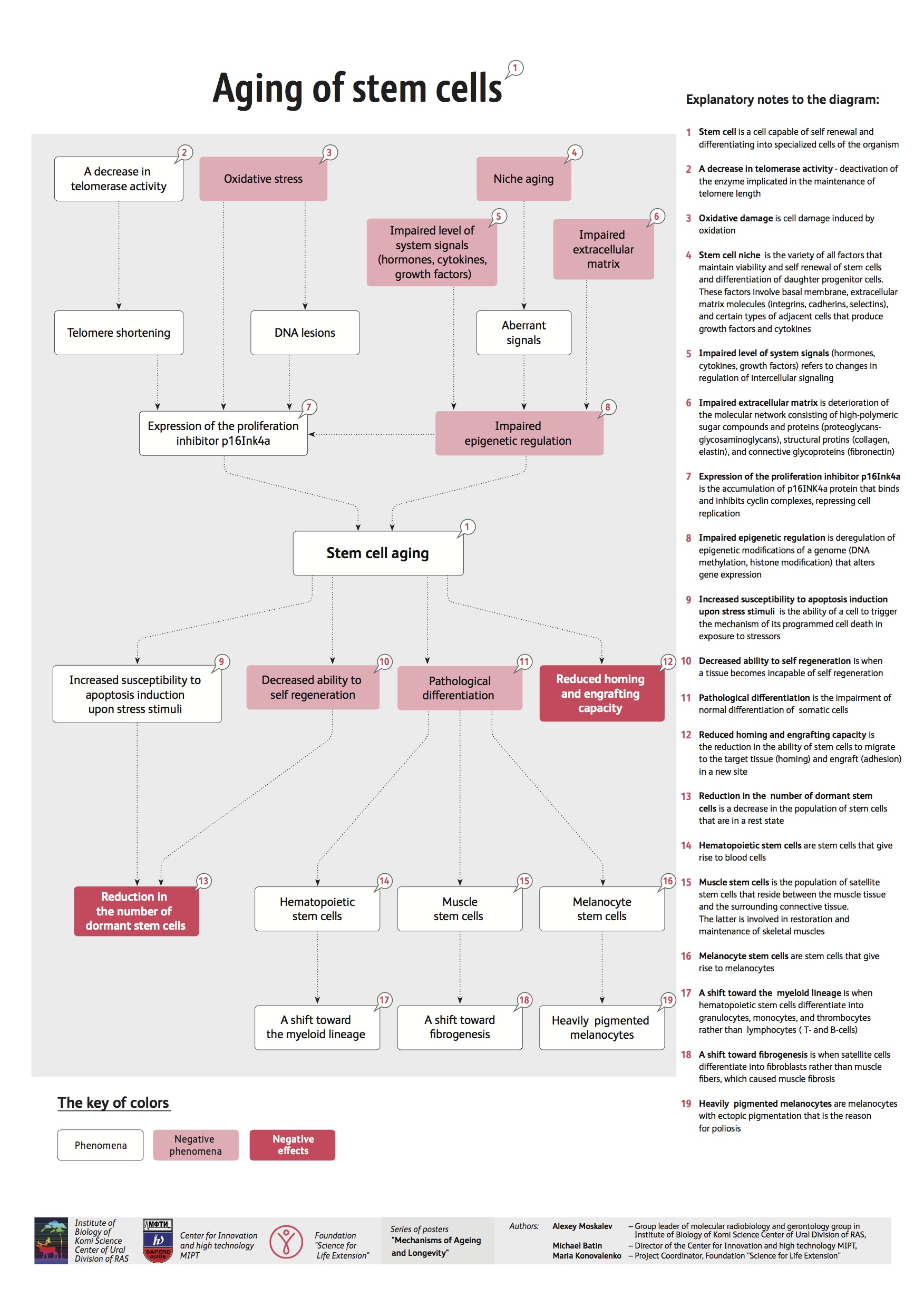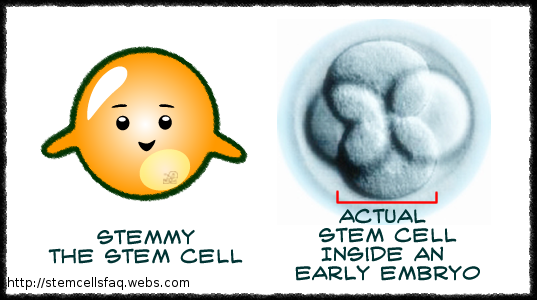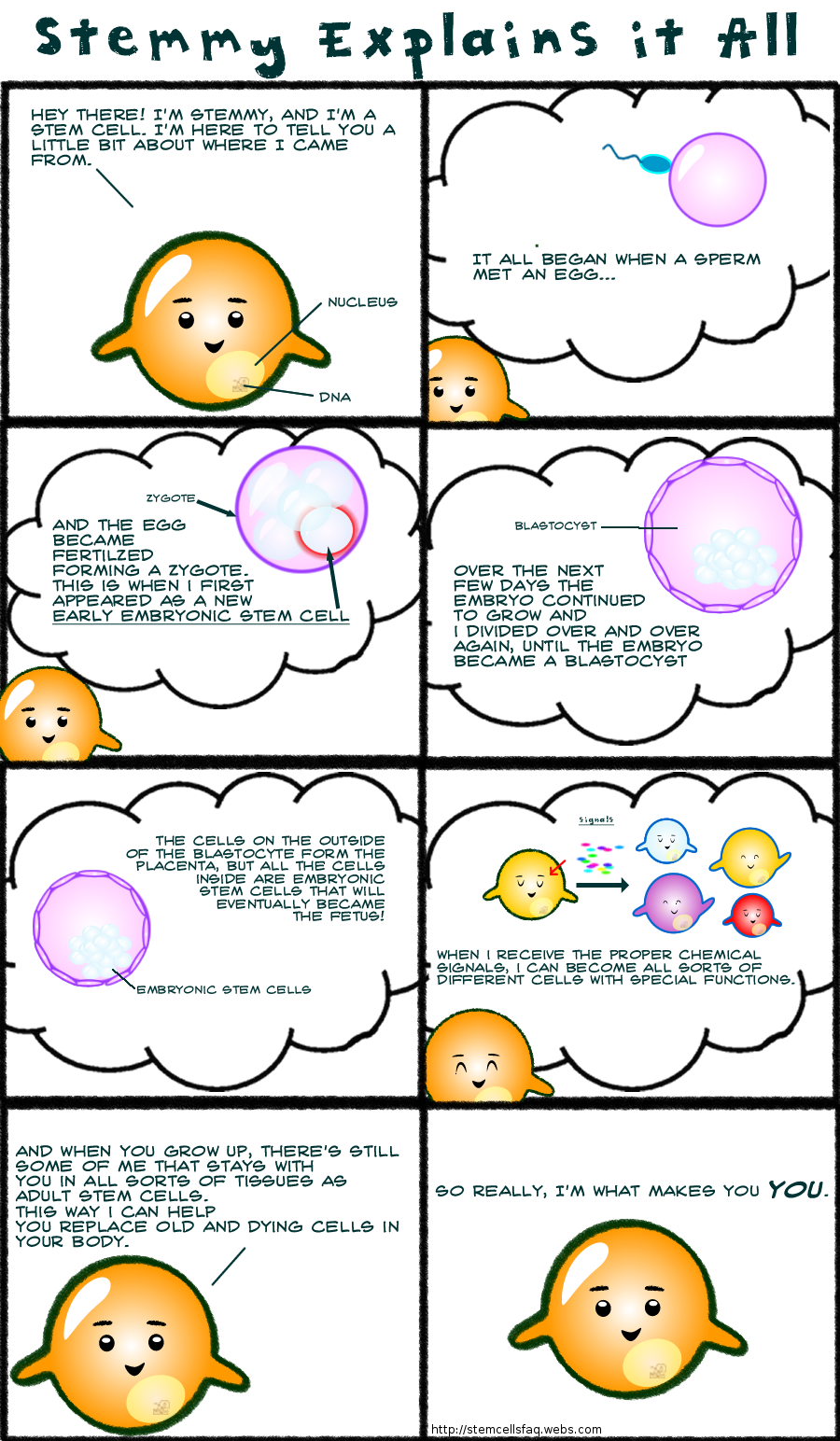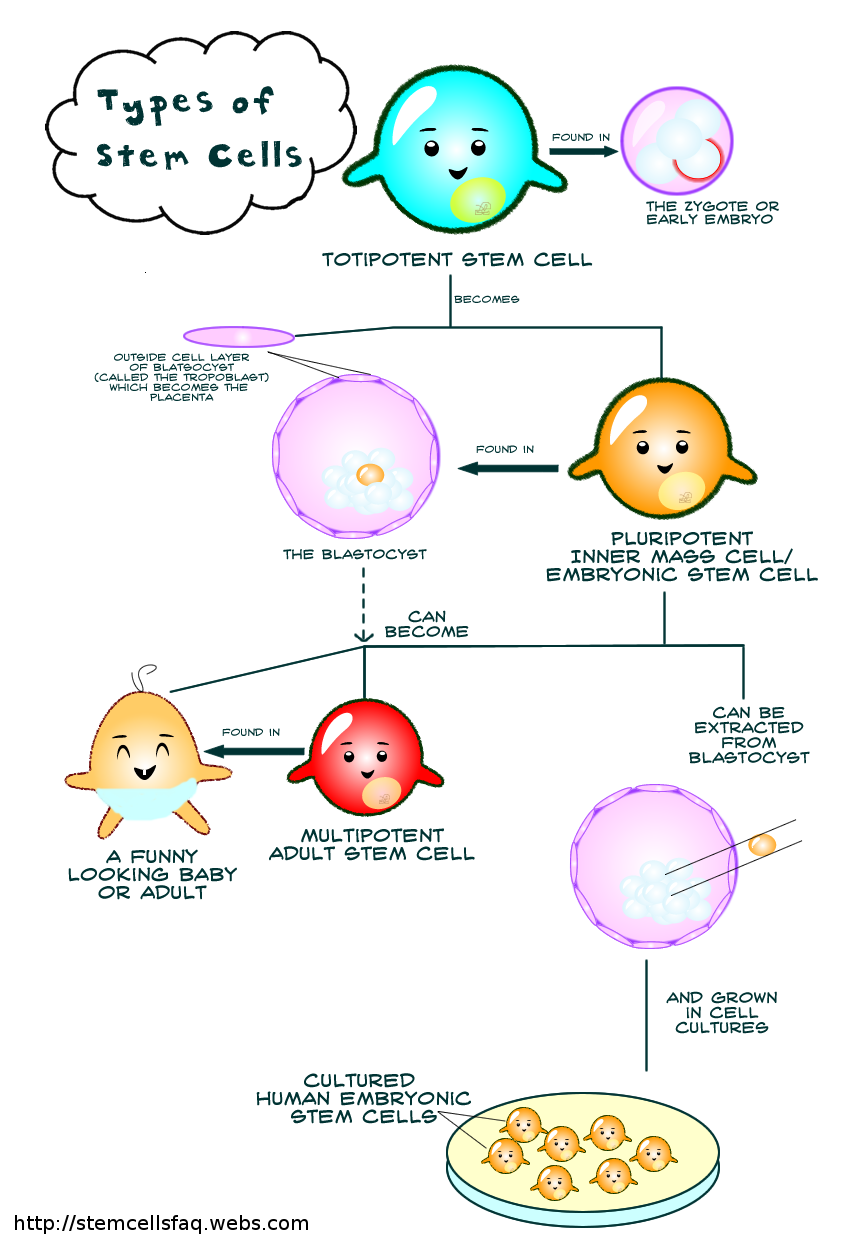Cell Therapy pioneer TiGenix has announced positive interim safety results of its Phase IIa study of its allogeneic stem cell therapy Cx611 in rheumatoid arthritis (RA), showing a good safety profile at all three doses of the product that were administered in the trial.http://www.sciencebusiness.net/news/75982/European-cell-therapy-pioneer-makes-further-advance?utm_source
This is a significant development in the field of stem cell therapy because Cx611 is an allogeneic product that potentially could be made available off-the-shelf and used to treat any patient, without concerns that the foreign cells will cause an immune reaction. In addition, TiGenix says the product, which is made from adult stem cells derived from human adipose (fat) tissue, has a broad anti-inflammatory effect and could also be used to treat other autoimmune disorders.
If positive, the final results of the trial, due in April 2013, will set the scene for the further development of Cx611. The TiGenix trial is the most advanced in the world using stem cells to treat rheumatoid arthritis. Along with other cell therapies that are advancing in development such as ReNeuron plc’s neuronal cell therapy for treating the after-effects of stroke, and the human embryonic stem cell-based treatment for macular degeneration (a major cause of blindness) which Pfizer is developing in collaboration with scientists at University College London, the TiGenix news on Cx611 underlines Europe’s leading position in cell therapy and regenerative medicine.
These three products can all trace their origins back to publicly-funded basic research, providing a potent demonstration of the importance of continuing to support academic research in the field, and of building and reinforcing the clinical and regulatory framework for translating this research into commercial products.
Moves by some MEPs to end European Union funding for embryonic stem cell research in the proposed €80 billion Horizon 2020 R&D programme are widely seen as a threat to Europe’s standing in cell therapy and regenerative medicine. Science|Business brought together experts from patients’ groups, research charities, academe, industry, science and economic policy, and regulators, to discuss the implications of an end to EU support for embryonic stem cell research, and scope what needs to be done to build the regenerative medicines market in Europe, to the benefit of patients and the economy. The full report is now available here.
Intro
I work with stem cells in the lab, so I want to share the information on that topic at that blog. There are lots of interesting articles and study materials about stem cells on the web that's why I'm trying to gather them all here.
12/20/2012
positive interim safety results of its Phase IIa study of its allogeneic stem cell therapy
9/02/2012
Another one stem cell fraud
Wired news... Stem cell research becomes a strange place... Here's some recent events:
http://retractionwatch.wordpress.com/2012/08/29/ori-finds-harvard-stem-cell-lab-post-doc-mayack-manipulated-images/
Shane Mayack, a former post-doc in Harvard lab of Amy Wagers, a rising star in the stem cell field, has been sanctioned by the Office of Research Integrity for misconduct.
Mayack, who has defended her actions on this blog as honest error — albeit sloppiness — and has not admitted to wrongdoing, must undergo supervision if she receives any federal grant funding over the next three years, under the voluntary agreement.
Here’s the notice, which appeared in the Federal Register this week (and which theBoston Globe was first to report):
Based on the report of an investigation conducted by the Joslin Diabetes Center (Joslin) and additional analysis conducted by ORI in its oversight review, ORI found that Dr. Shane Mayack, former postdoctoral fellow, Department of Developmental and Stem Cell Biology, Joslin, engaged in research misconduct in research supported by National Institute of Diabetes and Digestive and Kidney Diseases (NIDDK), National Institutes of Health (NIH), grants T32 DK07260–29 and P30 DK036836 and the 2008 NIH Director’s New Innovator Award Program grant DP2 OD004345–01.
ORI found that Respondent engaged in research misconduct involving two (2) published papers:
• Mayack, S.R., Shadrach, J.L., Kim, F.S., & Wagers, A.J. ‘‘Systemic signals regulate ageing and rejuventation of blood stem cell niches.’’ Nature 463:495–500, 2010.
• Mayack, S.R., & Wagers, A.J. ‘‘Osteolineage niche cells initiate hemotopoietic stem cell mobilization.’’ Blood 112:519–531, 2008.
As a result of Joslin’s investigation, both Nature 463:495–500, 2010 (hereafter referred to as the ‘‘Nature paper’’) and Blood 112:519–531, 2008 (hereafter referred to as the ‘‘Blood paper’’) have been retracted by the corresponding author.
Specifically, ORI found that:
• Respondent falsely represented von Kossa-stained bone nodule images in two (2) published papers:
Figure 2B in the Blood paper was copied from an unrelated published experiment in Figure 3, J Orth Surg Res 1:7, 2006, and was used to falsely represent Respondent’s own experiment for bone nodules formed in cultured osteoblastic niche cells.
b. Figure S2c in the Nature paper was copied from an online image for an unrelated experiment (at http://skeletalbiology.uchc.edu/30_ResearchProgram/304_gap/3042_Lineage%20in%20Vitro/3042_01_aCellCult.htm#mCOB) and was used to falsely represent Respondent’s own experiment for bone nodules formed in osteoblastic niche cells from young and aged mice.
• Respondent falsely represented eight (8) flow cytometry contour plots as different experimental results by using identical plots but with different labels and different numerical percentages.
Specifically, the following contour plots in the Blood paper, the Nature paper, an earlier version of the Nature paper submitted to Science (hereafter referred to as the ‘‘Science manuscript’’), and a July 2008 PowerPoint presentation were identical but were labeled differently:
a. Panels 4 and 2 in Figure 6C, Blood paper, and panels 1 and 2, respectively, in supplementary Figure 3b, Nature paper
b. Panel 3 in Figure 6C, Blood paper, and panel 1 in Figure 2, July 2008 PowerPoint presentation
Panels 1 and 2, Figure 2b, Science manuscript, and panels 2 and 3, respectively, in Figure 2, July 2008 PowerPoint presentation
Panels 2, 3, and 4, supplemental Figure 4A, Blood paper, and panels 3, 1, and 2, respectively, in Figure 4B, Science manuscript
Both the Respondent and HHS want to conclude this matter without further expenditure of time or other resources and have entered into a Voluntary Settlement Agreement to resolve this matter. Respondent neither admits nor denies ORI’s finding of research misconduct. This settlement does not constitute an admission of liability on the part of the Respondent.
Nearly two years have passed since we first wrote about Mayack. At the time, Wagers’ group had just retracted a 2010 Nature paper — with a notable exception: Mayack refused to sign the notice, nor did she sign the notice for the retraction of the Blood paper, which appeared in late 2011.
As she wrote on this blog:
… the readers of Retraction Watch are no doubt aware that in October 2010, a paper that I co-authored was retracted fromNature and a notice of concern was posted regarding a second paper published in Blood.
So, what went wrong?
The answer to that question begins with the fact that errors, not fabrications, were made in assembling figures for these manuscripts. I am likely the one who made these errors.
Mayack reiterated that position in a comment, through her attorney, to us today:
I remain deeply sorry to the scientific community for mistakes made during the preparation of figures corresponding to some of the work I performed as a postdoc at Harvard Medical School. These were mistakes in representation and presentation of the data, as corroborated by ORI’s findings of ‘falsely presented’, and were not due to fabrication, falsification, or plagiarism of scientific results. I am deeply committed to moving forward and strive to contribute positively to the advancement of science, which has always been my utmost interest.
Wagers recently received tenure.
http://retractionwatch.wordpress.com/2012/08/29/ori-finds-harvard-stem-cell-lab-post-doc-mayack-manipulated-images/
8/27/2012
.
Here is the express Stem Cell news on the other place - my paper.li. Very interesting place to put your information. I like it!:
6/22/2012
6/08/2012
5/29/2012
...antipsychotic drug, Thioridazine, has activity against cancer stem cells
Mick Bhatia’s lab has found that the antipsychotic drug, Thioridazine, has activity against cancer stem cells.
The work, published in Cell (read paper here), indicates that Thioridazine works not by killing cancer stem cells, but rather by encouraging the stem cells to differentiate.
Bhatia’s group used a novel screening approach (see graphical abstract from the paper above) to find molecules that specifically differentiate cancer stem cells. Interestingly they found Thioridazine, which intriguingly targets the dopamine receptor expressed on certain cancer stem cells. Bhatia can be seen in the interview below talking about the finding.
You might think then that Thioridazine would be safe because it only targets cells expressing dopamine receptor, however the drug reportedly has significant safety concerns due to causing fatal heart arrhythmias and regulators have largely phased it out in both Canada and the U.S..
Even so, it may be safe for cancer treatments since it could be used for a much shorter period of time, speculated Bhatia. However it is still early days in this story so there is much to learn about this new route to attacking cancer. Still, a very exciting and important development.
Thanks to https://www.ipscell.com/2012/05/psyching-out-cancer-stem-cells-using-old-antipsychotic-drug-as-a-new-weapon-against-cancer/ for the information.
5/26/2012
Stem Cell Comics
Open publication - Free publishing
Beautiful educational comics about stem cells! ‘Hope Beyond Hype’ is a story about stem cell therapies from science discovery to working therapy.
4/19/2012
Beautiful Cell Pictures
Those beautiful cell pictures were found at
http://bpod.mrc.ac.uk/search?utf8=%E2%9C%93&keywords=stem+cells
4/16/2012
Cool Article About the History of Stem Cell Research!
That's wonderful! I thought about it lots of times!
Who really discovered stem cells?
Is it even possible that one scientific team all by themselves discovered something so ubiquitous as stem cells?
In theory “yes”, but after much historical research including this great historical article in Cell Stem Cell, I would argue that no one group really discovered stem cells.
Instead I believe the “discovery” of stem cells was an ongoing team effort over a period of many decades and there is much credit to go around.
Who gets the credit now according to most people now for “discovering” stem cells?
Canada rightly takes pride in the work of their scientists Drs. James Till and Ernset McCulloch, who did pioneering studies in hematopoietic stem cell research.
In Canada, Till and McCulloch are unambiguously called the world’s discoverers of stem cells. Period. No ambiguity.
But is that correct?
Nope.
2/24/2012
Stem Cell Aging
http://www.fightaging.org/images/aging_of_stem_cells.jpg
the problem of Stem Cell Aging is one of the most intrigueing in stem cell biology field.
2/13/2012
Funny Cord Faces
Thanks to medicineisfun
2/07/2012
Phase I safety study on the use of cord blood stem cells to treat children with sensorineural hearing loss
Children’s Memorial Hermann Hospital and Cord Blood Registry® (CBR) are launching the first FDA-approved, Phase I safety study on the use of cord blood stem cells to treat children with sensorineural hearing loss.
2/05/2012
1/27/2012
The reconstruction of rat penis with stem cells!
Wow. Scientists are able to reconstruct almost every organ in our body. The latest news:
Men in need of penis reconstruction could soon enjoy the benefits of a special ingredient: stem cells. A new study in rats shows that lacing a penis graft with adult stem cells yields better healing and sexual function than using the graft alone. The finding may point the way to improved treatments for a variety of human penile impairments.
Men with penis injuries, deformities, or severe Peyronie's disease—which causes excessive scarring that can curve or shrink the penis—sometimes need surgery to reconstruct their genitalia and restore their sexual function. Many receive a graft made of their own tissue, cadaver tissue, or pig intestines, but the surgery can cause complications, including erectile dysfunction.
1/22/2012
Sperm from the Artificial Testicle!
Stem cell researchers are going to develop in vitro an important part of male's organism - testicle with sperm! More about the event was written by: Rachael Rettner, MyHealthNewsDaily Staff Writer
Published: 01/18/2012 05:20 PM EST on MyHealthNewsDaily
Researchers in California hope to become the first in the world to build an artificial testicle that produces human sperm. Such a device could allow infertile men to conceive children.
While recent studies have shown it's possible to treat infertile male mice by producing sperm using stem cells from the mouse, the same has not been done for humans, said researcher Dr. Paul Turek, director of the Turek Clinic, a men's health medical practice in San Francisco.
Using a newly received government grant, Turek and his fellow researchers hope to develop a human "sperm-making biological machine," he said.
Unlike a non-sperm-producing prosthesis — a saline-filled implant for men missing a testicle — the device will not be designed to resemble a testicle. Instead it will most closely resemble a cylindrical bag a few inches long, Turek said, creating a final product that looks something like a transparent, over-sized Tootsie Roll.
Published: 01/18/2012 05:20 PM EST on MyHealthNewsDaily
Researchers in California hope to become the first in the world to build an artificial testicle that produces human sperm. Such a device could allow infertile men to conceive children.
While recent studies have shown it's possible to treat infertile male mice by producing sperm using stem cells from the mouse, the same has not been done for humans, said researcher Dr. Paul Turek, director of the Turek Clinic, a men's health medical practice in San Francisco.
Using a newly received government grant, Turek and his fellow researchers hope to develop a human "sperm-making biological machine," he said.
Unlike a non-sperm-producing prosthesis — a saline-filled implant for men missing a testicle — the device will not be designed to resemble a testicle. Instead it will most closely resemble a cylindrical bag a few inches long, Turek said, creating a final product that looks something like a transparent, over-sized Tootsie Roll.
1/20/2012
Stem Cell Research Problems
Another one opinion on stem cell research:
http://shyfish.info/a-peek-at-each-side-in-the-stem-cell-studies-discussion/
A lot has been written and also said about stem cell research, and most of these trumpet about ultimately locating a cure for several ailments. Nevertheless, presently there are also camps that absolutely dismiss the stem cell research pros, while focusing on its purportedly damaging aspects. But before many of us live on the stem cell research disadvantages, allow us very first discuss exactly what come cellular material are regarding. Originate cells produce fresh blood vessels tissues, which is why they will are considered as the blood’s human being building blocks. The thing that makes come cells particular is the simple fact that they can possibly become various kinds of cells, which usually in switch may be developed into specialized cellular material that may be used by scientists in their own search for ways to repair bodily organs that have by now sustained harm.
Of the a couple of vast forms of stem tissues observed in mammals, embryonic base cells are the versions that could possibly grow into other kinds of tissues. Very easily stored in a laboratory, embryonic base cellular material, are additionally special in the feeling that they are able to identical them selves in countless amounts, along with forever with that.
This quality on your own means they are ideal for scientific utilize along with ongoing stem cell research. Most of this reports have already proven that serious diseases similar to ms, Parkinson's along with Alzheimer's is treatable with the assistance of come tissue. That perhaps retains the potential to the treatment of heart disease, strokes, kidney disease, liver disease, pancreas disease and also arthritis, as well as discovering a treat for cancer malignancy.
But for almost all the stem cell research pros, some groupings notice the concerns in the idea. Much of the stem cell research downsides that that they are professing are moral in character. These people say that because embryonic come cells are in truth little embryos, just what stem mobile researchers are tinkering with is living. Almost all of those who take this distinct argument are those which consider that existence starts with conception, certainly not at start, as just what is typically accepted.
The problem of cloning has also hounded stem cellular scientists, which profess they only rely on them for research functions, not necessarily to clone another individual. Nevertheless whichever the problems for or versus stem cell research are, the truth remains that teens is on the verge involving a main health-related as well as scientific jump, one that can modify the globe once and for all.
1/12/2012
Stem Cells & Future Medicine (important opinion)
I'd like to share an interesting opinion from Sara Rankin, Professor of Leukocyte and Stem Cell Biology at Imperial College London's Faculty of Medicine, turns the spotlight onto the future impact of stem cell therapy:
Canadian scientists investigating the effects of radiation on the human body 50 years ago discovered that bone marrow 1contains stem cells that provide a lifelong supply of blood cells. This discovery paved the way for the first stem cell therapy – in the form of bone marrow transplants – using bone marrow stem cells from healthy donors to treat patients with genetic blood disorders and leukaemias.
Scientists went on to show that in addition to the bone marrow, almost every tissue in the body, including heart, brain, teeth and gut, contain tissue-specific stem cells. The function of these stem cells is to repair or regenerate tissues that are constantly being damaged as a result of general wear and tear – for example, replacing the lining of the gut as it is being sloughed off or generating new blood cells as they die or are destroyed. Such tissue-specific stem cells are also known as adult stem cells, simply because they are found in adult tissues. These adult stem cells are distinct from embryonic (ES) stem cells that are only found in embryos.
Canadian scientists investigating the effects of radiation on the human body 50 years ago discovered that bone marrow 1contains stem cells that provide a lifelong supply of blood cells. This discovery paved the way for the first stem cell therapy – in the form of bone marrow transplants – using bone marrow stem cells from healthy donors to treat patients with genetic blood disorders and leukaemias.
Scientists went on to show that in addition to the bone marrow, almost every tissue in the body, including heart, brain, teeth and gut, contain tissue-specific stem cells. The function of these stem cells is to repair or regenerate tissues that are constantly being damaged as a result of general wear and tear – for example, replacing the lining of the gut as it is being sloughed off or generating new blood cells as they die or are destroyed. Such tissue-specific stem cells are also known as adult stem cells, simply because they are found in adult tissues. These adult stem cells are distinct from embryonic (ES) stem cells that are only found in embryos.
1/11/2012
MSCs in Clinical Research (best reviews, part-2)
Bernardo, M., Pagliara, D., & Locatelli, F. (2011). Mesenchymal stromal cell therapy: a revolution in Regenerative Medicine? Bone Marrow Transplantation DOI: 10.1038/bmt.2011.81
Siniscalco, D., Giordano, A., & Galderisi, U. (2011). Novel insights in basic and applied stem cell therapy Journal of Cellular Physiology DOI: 10.1002/jcp.22945
1/10/2012
1/09/2012
Education (stem cell topic)
Beautiful stem cell education resource: http://www.tellmeaboutstemcells.org/
The Best Mesenchymal Stem Cell Reviews (part 1)
I'm involved in MSC-research and I love brilliant articles on that topic. The list of my favorite reviews about Mesenchymal Stem Cells is here now:
 Klopp, A., Gupta, A., Spaeth, E., Andreeff, M., & Marini, F. (2011). Concise Review: Dissecting a Discrepancy in the Literature: Do Mesenchymal Stem Cells Support or Suppress Tumor Growth? STEM CELLS, 29 (1), 11-19 DOI: 10.1002/stem.559
Klopp, A., Gupta, A., Spaeth, E., Andreeff, M., & Marini, F. (2011). Concise Review: Dissecting a Discrepancy in the Literature: Do Mesenchymal Stem Cells Support or Suppress Tumor Growth? STEM CELLS, 29 (1), 11-19 DOI: 10.1002/stem.559
KNEE SURGERY, SPORTS TRAUMATOLOGY, ARTHROSCOPY
Volume 17, Number 11, 1289-1297, DOI: 10.1007/s00167-009-0782-4
 A Comprehensive Review on Mesenchymal Stem Cell Growth and Senescence Krzysztof Książek. Rejuvenation Research. April 2009, 12(2): 105-116. doi:10.1089/rej.2009.0830.
A Comprehensive Review on Mesenchymal Stem Cell Growth and Senescence Krzysztof Książek. Rejuvenation Research. April 2009, 12(2): 105-116. doi:10.1089/rej.2009.0830.
 Kim, S., & de Vellis, J. (2009). Stem cell-based cell therapy in neurological diseases: A review Journal of Neuroscience Research, 87 (10), 2183-2200 DOI: 10.1002/jnr.22054
Kim, S., & de Vellis, J. (2009). Stem cell-based cell therapy in neurological diseases: A review Journal of Neuroscience Research, 87 (10), 2183-2200 DOI: 10.1002/jnr.22054
Stem Cells Trans MedDecember 2011sctm.2011-0024
Concise Review: Clinical Translation of Wound Healing Therapies Based on Mesenchymal Stem Cells
Wesley M. Jackson, Leon J. Nesti, and Rocky S. Tuan
Inflammation and mesenchymal stem cell aging Gunter Lepperdinger
Current Opinion in Immunology Volume 23, Issue 4, August 2011, Pages 518-524
doi:10.1016/j.coi.2011.05.007
 Karp, J., & Leng Teo, G. (2009). Mesenchymal Stem Cell Homing: The Devil Is in the Details Cell Stem Cell, 4 (3), 206-216 DOI: 10.1016/j.stem.2009.02.001
Karp, J., & Leng Teo, G. (2009). Mesenchymal Stem Cell Homing: The Devil Is in the Details Cell Stem Cell, 4 (3), 206-216 DOI: 10.1016/j.stem.2009.02.001
To be continued...
KNEE SURGERY, SPORTS TRAUMATOLOGY, ARTHROSCOPY
Volume 17, Number 11, 1289-1297, DOI: 10.1007/s00167-009-0782-4
Stem Cells Trans MedDecember 2011sctm.2011-0024
Concise Review: Clinical Translation of Wound Healing Therapies Based on Mesenchymal Stem Cells
Wesley M. Jackson, Leon J. Nesti, and Rocky S. Tuan
Inflammation and mesenchymal stem cell aging Gunter Lepperdinger
Current Opinion in Immunology Volume 23, Issue 4, August 2011, Pages 518-524
doi:10.1016/j.coi.2011.05.007
And the very best:
To be continued...
1/06/2012
Stemmy!111 ^_^
So cuuuuute!11111
And more about Stemmy:
Aaaaaannnnnddddd moooooooreeee:
And more about Stemmy:
Aaaaaannnnnddddd moooooooreeee:
Pictures from http://www.terry.ubc.ca/2009/08/07/faq-stem-cells-sa-mix/, moreover you can find text there.
Subscribe to:
Posts (Atom)







